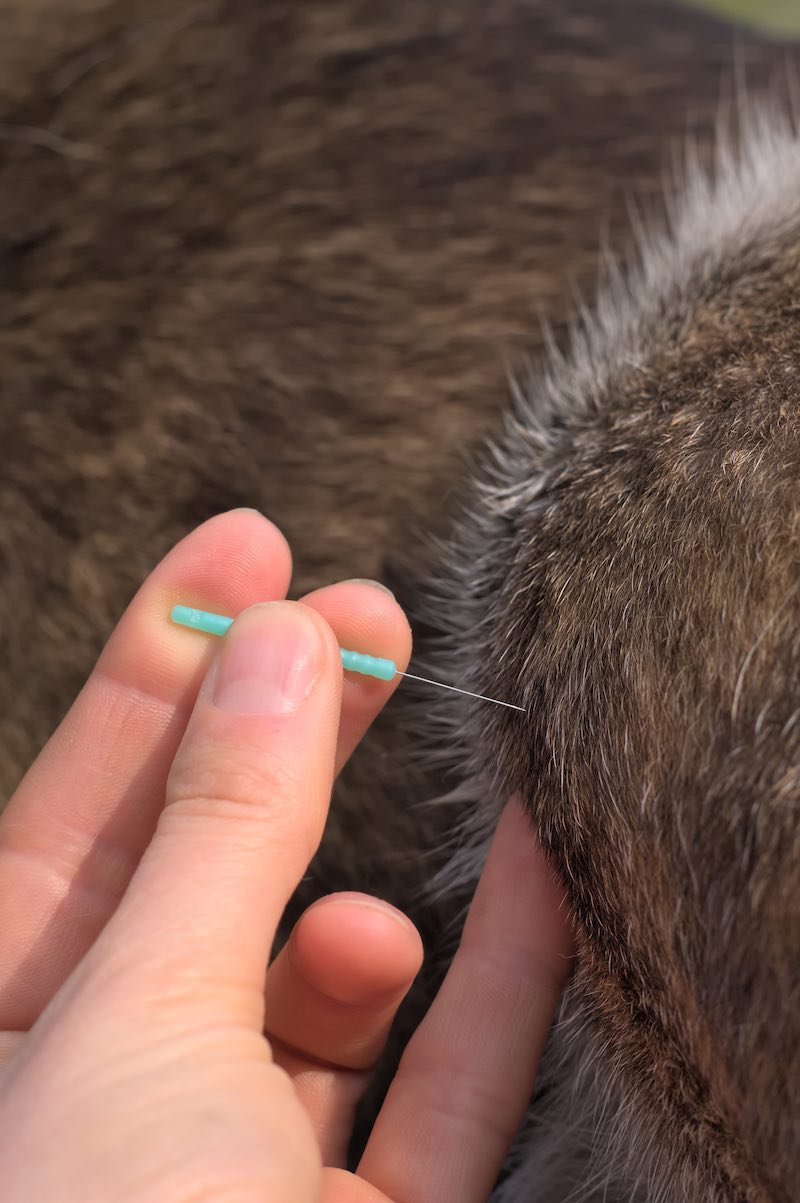Acupuncture is the practice of inserting fine, solid needles into the body. It acts on the nervous system to block pain signals and encourage the body to produce more of its own natural painkillers. In conditions that are not painful, acupuncture can also sometimes encourage normal bodily functions.
Although acupuncture is commonly associated with the treatment of painful conditions such as osteoarthritis and muscle strains, it can be used in some individuals to treat a variety of conditions including constipation, inflammatory bowel disease, urinary incontinence and chronic non-healing wounds.
It can be used on a variety of pets including dogs, cats and rabbits.
A course of acupuncture is usually once a week for four to six weeks. After this time we will know whether it is working for your pet and then, depending on the condition and how they have responded, we will work out a plan that usually involves tailing off the treatment so that the effect is maintained for as long as possible.
Georgiana is a small animal vet who practices acupuncture mainly from our Forfar and Kirriemuir branches. Her enthusiasm for it came from her experience with their family Jack Russell, Toffee, who saw great results when being treated for urinary incontinence.
For more information, read our frequently asked questions about acupuncture:

Acupuncture FAQs – Thrums Vets in Angus and Perthshire
Veterinary acupuncture involves inserting fine needles into specific points on a pet’s body to stimulate the nervous system. It can help alleviate pain, reduce inflammation and promote healing.
Acupuncture is often used for arthritis, joint pain, muscle strains, spinal issues, gastrointestinal problems, neurological conditions, chronic wounds and post-surgical recovery.
Yes. It is performed by trained veterinary professionals and most pets tolerate the procedure well.
Needles used are very thin, and most animals experience minimal discomfort. Many pets become relaxed or sleepy during the session.
Sedation is rarely necessary. It may be used if a pet is in pain or cannot stay still during the treatment.
A typical course involves weekly sessions over four to six weeks. The exact number depends on your pet’s condition and response.
Some pets may appear more relaxed or tired, while others may seem more active. Both responses are normal. Keeping your pet calm for the remainder of the day helps enhance the benefit.
